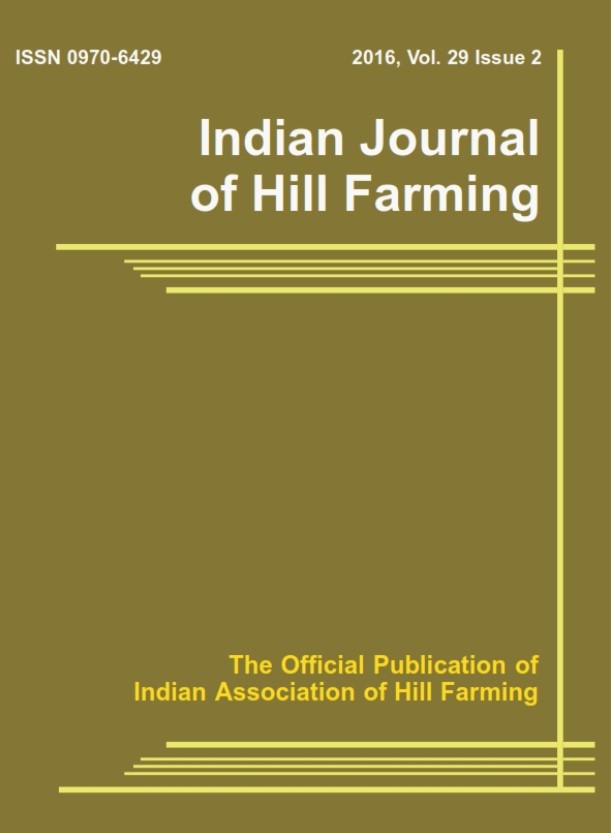Soil and Crop Productivity of Lowland Rice as Influenced by Establishment and Nutrient Management Practices
DOI:
https://doi.org/10.56678/Keywords:
Hill ecosystem, lowland rice, nutrient uptake, soil organic carbon, productivityAbstract
The productivity of rice (Oryza sativa L.) in north eastern hill region (NEHR) of India is low due to inappropriate cultural practices and nutrient management. Field experiments were conducted for consecutive four years (2004 to 2008) under lowland rainfed condition to evaluate the impact of crop establishment methods and nutrient management practices on soil health, productivity and economics of rice. Three establishment methods viz. system of rice intensification (SRI), integrated crop management (ICM) and conventional rice culture (CRC) were evaluated under five nutrient management practices viz. recommended dose of fertilizers (RDF) (80:26.2:33.3 N, P, K kg ha-1), Farm yard manure (FYM) 10 t ha-1, 50% RDF + FYM 10 t ha-1, RDF + FYM 5 t ha-1 and control (no FYM or fertilizer). The data recorded during fourth year of the study (2008) revealed that SRI rice culture recorded higher yield attributing parameters viz. number of panicle hill-1 and number of grain panicle-1 than ICM and CRC. However, the grain and straw yield were significantly higher with ICM than that of CRC but was at par with SRI. Integrated application of RDF + FYM 5 t ha-1 followed by 50% RDF + FYM 10 t ha-1 recorded higher value of all the yield attributing parameters and yield of rice compared to control. SRI being at par with ICM recorded significantly higher NPK uptake as compared to CRC. The NPK uptake was highest with combined application of inorganic fertilizer and organic manure. At harvest, available soil NPK were higher under SRI and ICM and integrated use of NPK and FYM 5 t ha-1 as compared to other treatments. The highest net return was recorded under ICM rice culture and application of RDF + FYM 5 t ha-1. Thus, ICM rice culture and integrated application of RDF + FYM @ 5 t ha-1 can be recommended for sustainable rice production in the NEHR of India.
Downloads
Published
Issue
Section
License

This work is licensed under a Creative Commons Attribution-NonCommercial-NoDerivatives 4.0 International License.




